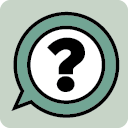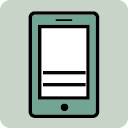Digital Experience User Interface
- lcarterdesign
- Dec 13, 2021
- 3 min read
Updated: Jul 16

During 2021, the online customer experience had more importance for organizations than ever before. Public libraries, unable to enjoy the same level of in-person service, were no exception. Fortunately, libraries have technology service providers that can bridge the gap to make these changes happen easily.
As the Graphic Designer for my local library district, I lead in a public facing campaign to make some significant improvement to how Library users interact digitally with library products. This included introducing new security enhancements and a new library App for customers. Based on new vendor requirements, the Library District needed to implement a new 4-digit PINS system to access library accounts, followed up by introducing a refreshed library app with better service capabilities.
Guiding the public through a new process can always be challenging, so as a District we packaged the process as an opportunity for users to have an updated overall user experience, and created a branding mark for the entire process.

The first phase was to create awareness of the changes before launching the PINS requirement. Using an umbrella logotype mark, we gradually rolled out these changes on social media, with targeted emails, graphics on the District's website, and in the buildings using digital signage and printed bilingual handouts. We kept the focus on the library card, which is the user's key to unlocking Library digital resources.
We created informational handouts to explain the process, with step-by step instructions to make the process clear to users of all digital comfort levels.

Once the PINS process was established in early spring, we turned our attention to the Library's app. The District had been using an existing app for approximately 10 years. By contracting with Solus, a new library-specific technology vendor, new capabilities could be easily added to the app, including nesting multiple barcodes for families, enhanced searching features, and a sleeker overall look. At this point, I worked to our staff web developer to introduce new, more modern icons for these services. The previous app relied heavily on the orange and brown tones from the District's logo. To give a refreshed, more modern look, I chose to go with a more monochromatic look focusing on teal, grey, black and white. Instead of using artificial lighting and shadows, as the app previously used, I chose to go with simple, flat icons for a more timeless look and feel.
To help educate our customers about the new product, we chose to build an instructional video. Working with our Communications Manager, I built 1920x1080 pixel image slides, which would be incorporated into a video highlighting features. I began with a stock graphic of a phone display, tweaked the background colors to coordinate with our look, and then used step by step screenshots of our app to build out the graphics. The completed video can be viewed here.
We supported this app rollout with in-library digital signage, social media coverage, focused email blasts to customers, a website carousel graphic, and an article in our print newsletter.

Our rollout of the app and subsequent marketing efforts were noticed by our vendor, Solus, and our web developer was invited to present the steps of our marketing and implementation process to their other clients in June, once the rollout was complete.
The clean look of this campaign applied well to the components released in 2021, and we hope to use a similar approach when a website redesign and launch can be completed in the future.
















Comments